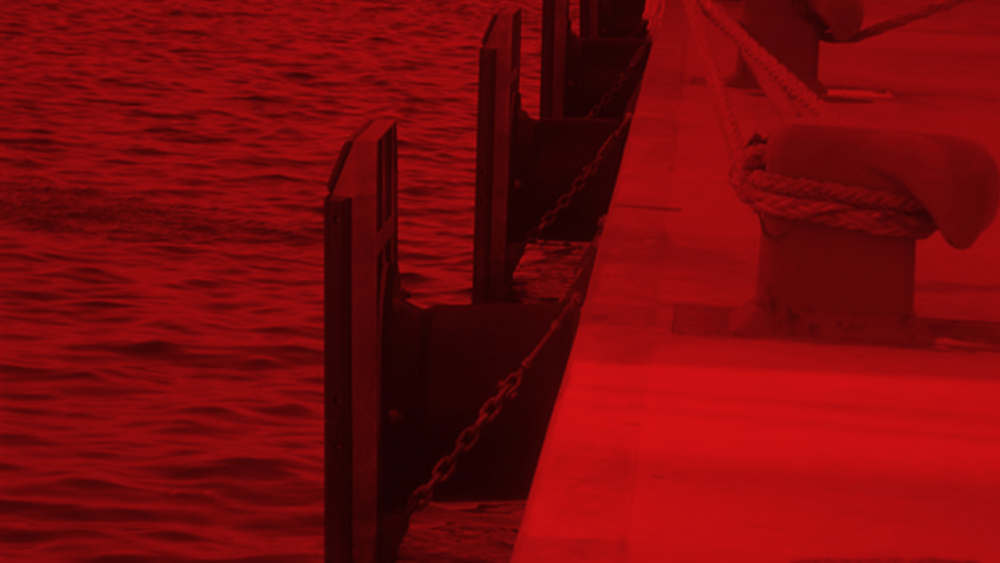Mooring operations are among the most delicate manoeuvres in any port. Every time a vessel approaches the dock, a set of key systems must come into play to ensure a safe, efficient, and damage-free berthing.
Among these systems, port fenders play a critical role. They are responsible for absorbing the energy of impact and protecting both the vessel and port infrastructure.
How Do Mooring Operations Work?
A mooring operation is much more than just securing a ship to the quay. It is a complex and high-risk process that demands precision, coordination, and port infrastructure tailored to a wide range of variables.
During mooring, a vessel can generate significant force upon contact with the dock—especially large ships or when operating in adverse weather conditions. That’s why port facilities must be equipped with technology capable of absorbing kinetic energy without compromising structural integrity or operational efficiency.
Key factors such as vessel type and size (container ships, bulk carriers, ferries, etc.), speed and approach angle, environmental conditions, quay design, and available time for the manoeuvre all have a direct impact on the success and safety of the mooring operation.
Key Phases of a Mooring Operation
A typical mooring operation involves several stages:
- Vessel approach, with or without tug assistance.
- Contact with the quay, where port fenders absorb the impact.
- Mooring, securing the vessel using ropes or automated systems.
- Environmental monitoring, managing wind, wave, and tidal effects.
All systems must work together seamlessly. That’s why having high-performance fender systems is essential for the success of each mooring operation.
Berthing Aid Systems (BAS) developed by Prosertek also play a key role in this process. These systems allow real-time monitoring of variables such as vessel speed and approach angle, offering the captain, pilot, and shore personnel critical information for safer and more precise decision-making. Their implementation helps reduce human error and raises safety standards in even the most demanding mooring scenarios.
Modern Challenges in Mooring Operations
Today’s ports face new challenges that make reliable mooring operations more critical than ever:
- Larger vessels, requiring more robust systems.
- Higher mooring frequency, demanding faster turnaround.
- More extreme environmental conditions, increasingly frequent.
- Stricter safety and sustainability regulations.
These factors mean that any failure in the fendering or mooring system can have serious consequences. For this reason, port fender systems must evolve alongside the growing demands of maritime traffic.
What Are Port Fenders?
Port fenders are systems installed on docks to absorb the energy generated when a vessel contacts the quay. Their purpose is twofold:
- To protect both the dock and the vessel from structural damage.
- To enable a controlled, safe manoeuvre during mooring.
At Prosertek, we develop a wide range of fenders tailored to the operational and structural requirements of modern ports.
Among our models are TNC fenders, known for their high energy-reaction (E/R) ratio, robustness, and durability; SC fenders, designed for high deformation capacity and a wide contact surface; and IV fenders, which offer excellent energy absorption in a modular and compact format.
We also offer specialised solutions such as SVA and SVAP fenders, ideal for significant tidal ranges and longitudinal berthing angles; C fenders, a simple and efficient option; and floating fenders FL-N and FL-E, perfect for berthing angles up to 15° and for applying low pressure on the ship’s hull.
Each fender type responds to different operational scenarios—vessel size, berth configuration, mooring frequency, and more.
In this article from Prosertek’s blog, we explore in detail the most common port fender types and their use cases.
How to Choose the Right Fender System
Selecting the right port fender system is not a one-size-fits-all decision. Variables such as the types of vessels calling at the berth, infrastructure geometry, expected impact energy, and environmental conditions (prevailing winds, wave action, tidal range) all influence the required design and performance of the fenders.
An often-overlooked element is the operational frequency and functional demands of the berth. A fender designed for occasional use is not the same as one built to withstand daily impacts from large container ships and ferries. Factors like durability, maintenance requirements, and resistance to aging must also be considered—alongside compliance with international standards such as PIANC and ISO.
At Prosertek, we take an integrated approach to each project. Our team performs a technical and customised analysis of the impact scenarios, operating cycles, and the structural context of the dock. This enables us to design tailor-made fender systems that optimise both safety and cost-efficiency in each mooring operation.
Conclusion – Investing in Safety Means Gaining in Efficiency
Mooring operations are far more than isolated manoeuvres—they are a fundamental part of a port’s overall performance. Having high-quality port fenders, adapted to the specific environment and vessel types, makes it possible to:
- Shorten mooring times.
- Minimise risk of structural damage.
- Meet international standards.
- Improve the overall operational efficiency of the facility.
At Prosertek, we have been designing advanced mooring and fendering solutions for over 30 years. If your port is facing new challenges from maritime traffic growth, we’re here to help you respond with expertise and confidence.



Comments are closed.